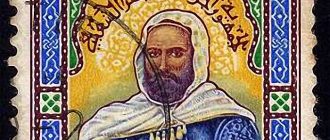The earliest Portuguese India Stamps relate to the postal history of India during the colonial period. Read our guide for more facts and information…
Postal communication between India and Portugal dates back to 1510, when the Viceroy began communications with the Lisbon Court after Old Goa was conquered by Afonso de Albuquerque. Mails were transported via ships and over land routes, and the official correspondence that was involved can be explored in the present day museums and archives.
The first Portuguese India stamps
The very first Portuguese India postage stamps were released on the 1st of October in 1871. They were circulated to enable local postal communication inside the colony, while overseas mails required British India stamps. The design had a central denomination with an elliptical band inscribed with the words ‘India Port’ and ‘Servico Postal’. Almost 55 types of Portuguese India stamps were printed from 1871 to 1877. However, Portuguese Indian postmarks existed since 1854, with post offices functioning in Goa and Damaun. Later in 1880, a post office was established in Diu, exclusively for Portuguese India postal communication.
Subsequent issues of Portuguese India stamps
When India was included in Portugal’s standard ‘crown’ issue of postage stamps in 1877, nine values were incorporated, between 5r and 300r. When these stamp stocks were exhausted in 1881, older local stamps were circulated with surcharges for varying values, leading to almost a hundred different types until extra ‘crown’ stamps were printed in 1882.
From the year 1886 onwards, Portuguese India stamps were issued in patterns that closely followed the patterns of other colonies. In 1912, an exceptional succession of surcharges came up, rendered by perforations made through the centre of existing stamps, with the new values overprinted on either side.
The commemorative Portuguese India stamps
In 1925, on Vasco da Gama’s 400th death anniversary, a stamp was released to mark the commemoration. Later in 1931, a group of six stamps were released to promote St. Francis Xavier’s Exposition conducted in Goa. Stamps were also released in 1946 and 1948 to honor prominent historical persons of the colony. The first stamp exhibition of Portuguese India stamps was held in 1952, when two stamps were released to commemorate the event; one of them was a remake of the earliest issue and the other depicted St. Francis Xavier. In 1956, an outstanding series honored the 450th year of Portuguese settlements, which comprised maps and portraits of ancient forts. Stamps having pictorial representation of various coins were released in 1959.
The final use
On Prince Henry’s 500th anniversary on 25th June 1960, the final regular issue of Portuguese India stamp was released. Indian stamps were circulated from 1961, though the earlier stamps were accepted till the beginning of 1962. Nevertheless, Portugal kept issuing stamps for the colony that ceased existence, but were not sold or considered valid.
Valuable Portuguese India postage stamps played an important role in the Indian postal system, alongside the Dutch, Danish, French and British postal systems.





